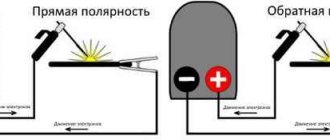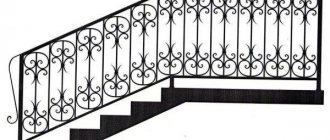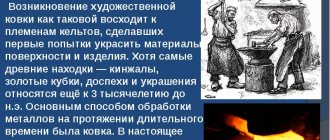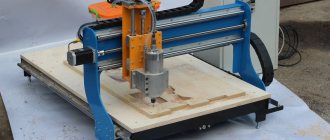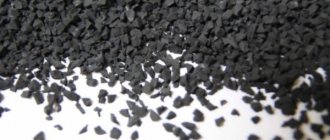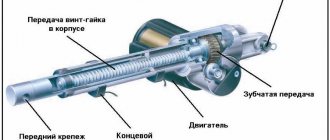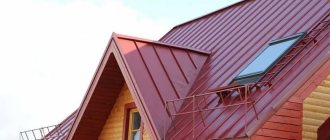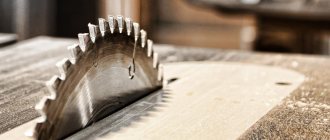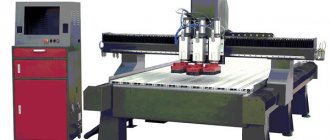A forged metal fence is considered one of the most reliable options for protecting the local area. In addition, a beautiful openwork fencing is an excellent addition to any landscape design. A wide range allows you to choose any design that suits the different style of a private home.
Forged fences attract with their special aesthetic appeal
Advantages of wrought iron fences
Wrought iron fences find their use in many places. The design is popular due to its combination of physical strength and visual lightness. To appreciate the versatility of forged metal fence sections, you need to familiarize yourself with its advantages:
- High level of reliability. Thanks to the manufacturing technology (the metal is repeatedly hardened), the fence becomes resistant to adverse weather conditions and mechanical damage.
- Durability (lasts for many years).
- Safety. Hardened metal has high strength, so it is not easy to damage the material. In addition, a large number of intertwined rods, sharp tips and small elements prevent the penetration of intruders.
- Aesthetic appeal. Many products are exclusive and made to order. Fences with forging elements look original and beautiful.
- Easy care. Does not require constant cleaning. There is no need to dismantle the structure to remove scratches or rust.
- A wide range of. A wide variety of types allows you to install protective, decorative (fences made of artistic forging) and combined metal gates.
- A harmonious combination with any building style.
- Resistant to corrosion and fire due to powder or galvanized coating.
Forging for any fence can be made according to an individual sketch, thereby giving it uniqueness and difference from typical fences.
A beautiful forged fence is the calling card of a suburban area
The service life of forged fences is calculated in decades and even centuries, provided that the protective coating is updated in a timely manner
Cold forging machines
If the future owner of the fence intends to make the details of the ornament himself, he needs access to the following machines:
- "Gnutik." Bends the rod into an arc or at any one point.
- "Wave". Gives the rod the shape of a sinusoid.
- "Snail". This is the same machine on which you can make “red coins” and other curls from a rod.
- "Torsion". As the name implies, it twists the rod relative to the longitudinal axis. This machine can be replaced with a pair of vices - powerful bench vices and small pattern ones. Having clamped the rod in a large vice, fix its other end in a small one and turn them little by little.
- "Rings". The unit winds the rod onto a round template, as if forming a cylindrical spring. After this, you need to cut the resulting spiral into rings, bring their ends together and weld them.
- "Flashlight". Twists a package of rods in the shape of the “flashlight” described above, after which they need to be welded to each other.
You can make any of the cold forging machines yourself; the drawings are published on the Internet. It’s not scary if you don’t have access to the entire set of equipment, but only to some of its types: even with just a couple of machines, you can create an interesting pseudo-forged composition.
If you want to get a truly spectacular fence, you can buy the missing parts in an online store or a blacksmith’s workshop.
Design features of a wrought iron fence
A metal fence decorated with an original design idea will become a decoration for any country house. Various ornaments, flowers, snails and other metal elements have become an integral part of forging as an art. Interesting options for forged fences are presented in many photos.
Forged fencing in a simple style looks discreet and solid
Forged fences are decorated not only with patterns, but also with colors. At the same time, the palette of colors is very diverse. You can choose fences whose forging has exactly the right shade that harmoniously fits into the overall appearance of the site. You can give a noble retro effect by patinaing the sections. The application of gilding looks interesting and rich.
Patination and gilding add chic and presentability to the fence
A forged fence on a high brick base is a compromise solution between the protective and aesthetic properties of the fence
A stylish design effect is achieved by combining metal and brick. These two materials are organically combined and complement each other. They add decorativeness and stability to the product. Performed in several options:
- Fence with brick pillars. The classic version, where the main part is made up of metal spans. It can be with or without a brick plinth.
- Equal ratio of brick and metal. In this case, the lower part of the fence (1-1.5 m) and the pillars are made of brick, and forged elements are located between the columns.
- Fence with semicircular forging. The most interesting and artistic option. The lower part (1-1.5 m) and the pillars are made of stone, and the spans are presented in the form of semicircular sections made of metal elements.
The combination of natural greenery and metal not only improves the aesthetic appearance, but also perfectly isolates the area. A hedge of climbing plants, entwined with an iron lattice, favorably emphasizes the garden plot.
A forged fence entwined with flowering plants looks elegant and beautiful.
The most popular solution is to decorate with forged lanterns. This design adds design completeness to the product. An additional element will make even the simplest option memorable. There are two placement methods:
- in the upper part of the fence post, in the form of a top (the lanterns are welded to the leg);
- wall or hanging lanterns (fastening is carried out on the side supports).
Forged lantern on a pole cap
Hanging lantern with forged elements
The use of cast elements adds volume and vivid detail to the product. Decorative decoration is made in the form of overlays or toppings on fence posts, thrust bearings, inserts in balusters, rosettes and bas-reliefs, metal flowers, leaves and small sculptural forms.
Using forging, you can make a variety of compositions of any style (classicism, gothic, baroque, empire, etc.). Mixing different styles is appropriate. To decide on the style, you can familiarize yourself in advance with photos of interesting options for wrought iron fences.
The baroque fence is decorated with small patterned details
Fencing in the classicism style implies balance and integrity. Rods with spears at the top are suitable for the design. This style involves the use of patterns of complex shapes.
Sharp peaks at the top of a classic fence will serve as a warning to uninvited guests
For lovers of Gothic style, wrought iron gates are suitable, characterized by sharp and strict lines. They are dominated by ornamental plant patterns.
Luxurious wrought iron fence in Gothic style
The most popular style is Art Nouveau. There are no straight lines; preference is given to plastic forms, curves and curls. Oriental ornaments and abstract compositions are also relevant.
Forging in the Art Nouveau style is characterized by smooth lines and rich abstract elements
Products in oriental style are complemented by painted elements
Varieties
In former times, there was no need to talk about the types of forged fences, since they were all made in the same way. In the era of machines, a new method appeared, so today there are several types of such fences.
Real wrought iron fence
In the classification of forged fences, such a fence is also called decorative. Of course, this does not mean that a real wrought iron fence can be considered only as a decoration. It is as durable and reliable as any other, it’s just that its aesthetic value is so great that it’s worth emphasizing.
Forged fence
A fence of this type is a picture embodied in metal, a true work of art. All elements are made in the same way as in the old days: a blacksmith uses hammer blows to “sculpt” various intricate decorations from hot steel blanks, like a sculptor from clay. The parts are also assembled into a single pattern exclusively in the old fashioned way: forged clamps and rivets are used. Welding is taboo.
The resulting design boasts not only indescribable beauty, but also absolute exclusivity. Actually, like any sculpture or painting.
A significant disadvantage of real wrought iron fences, as the reader has probably already guessed, is their high cost.
Cold forging
It would be more correct to call such a fence “pseudo-forging”, since it is only an imitation of real forging. The term “cold forging” is used only because of euphony - the method of making parts has nothing in common with blacksmithing. Also, these fences, as opposed to decorative ones, are also called protective or security.
For such a fence, all decorative elements are made without heating using one of two technologies:
- stamping from sheet steel: special presses are used, equipped with dies and punches of the required shape;
- bending and twisting rods of various sections: special deforming machines are used.
Cold forged fence
The parts obtained in this way are typical, but you should not think that all forged security fences are made as if they were carbon copies: decorative elements can be arranged in a variety of ways, so fences of this type turn out to be very original. And at the same time, they are quite affordable.
The modern method of connecting parts into a single fabric is also used - electric welding or threaded connections.
Combined
By ordering such a fence, the buyer gets the opportunity to slightly reduce the cost of real forging. In a combined fence, both types of parts that were just mentioned are used.
Design options - photos and diagrams
With all the variety of designs, patterns, shapes and decorative elements, forged fences are usually made according to the most common patterns. Such limitations are explained by the production method and metal processing technology.
A wide variety of wrought iron fence patterns allows you to choose the most suitable option for your site
The combination of stone, forging and wood looks original
Forged fences, photo diagrams of which can be viewed before ordering, are made in the following form:
- Separate spans. Decorated with brick or natural stone. The supports can be made according to a foundationless scheme or connected by a plinth with a height of 15 to 100 cm.
- Solid fabric. The fence is installed on steel tubular supports. The diameter of the pillars is small, so the entire fabric of the forged fence looks like one continuous span.
- Steel sections with screen. Most often, screening is used to protect or shade the local area. Basically, thin sheet metal or cellular polycarbonate is used to install the screen. Corrugated sheeting is also suitable. The closer the fence is to the house, the larger the shielding surface should be.
A forged fence, complemented with profile sheets, will hide the yard from prying eyes
When planning sketches, it should be taken into account that the production field has its own established forms, style and design ideas. A radical deviation can spoil the aesthetic appearance of the product.
There are countless design options for forged sections, here are just a few of the most common designs:
Not steel alone...
A potential buyer should know that a wrought iron fence can consist of more than just steel curls and leaves. It will be useful to add monumentality to it by using stonework. First of all, steel support pillars intended for fastening the sections can be lined with stone or at least brick. In this case, you need to embed mortgages into the masonry, welded inside to a steel post.
You can go further: lay out a low parapet of stone along the entire fence. Then the lower part of the steel sections will be further away from the ground, which will help extend their service life.
Figured fence made of gray brick with forging
A wrought-iron fence does not pose an obstacle to the prying eyes of strangers, which many people do not like . If you hem the openwork metal weaving with a wooden shield or corrugated sheet, the fence will take on a poor appearance. There is a very effective solution for this: a forged fence is hemmed with a polycarbonate sheet.
This plastic is a translucent material, but at the same time it blurs the rays passing through it, so it is impossible to see anything behind such a filing. At the same time, forged patterns look the same as if there was no filing at all.
The wrought iron fence looks aristocratic. Perhaps you want to learn how to make wrought iron fences with your own hands. We will tell you in detail what equipment is used for this.
See the types and design of a strip foundation for a fence here.
Fencing with a concrete fence is a reliable and durable option, and besides, such a fence looks quite remarkable. Read about manufacturing features in this article.
Photos of fences with forging elements
Pros and cons of such a fence
The following can be said in favor of polycarbonate sections:
- Resistant to temperature changes, frost, corrosion, fungus.
- Translucent sheets do not darken the surrounding area, so plants can be planted nearby. But what is happening behind the fence is practically invisible.
- The choice of colors allows you to choose the most harmonious option. Shades of bronze, silver, and green are popular.
- Does not require maintenance or painting. Dirt from the surface is washed away by the pressure of water.
- The material does not heat up in the sun.
- The color does not fade over the years.
- Good noise protection. Polycarbonate is an excellent option for street fencing near which there is a road or railway.
- Flexibility. The sheets can be easily shaped into the desired shape.
- Compatibility with other materials. The panels are complemented by forging and a metal frame. Looks good with brick, stone, wooden pillars.
- Low price.
- Quick installation.
Among the disadvantages it should be noted:
- Low strength. This doesn't apply to all types, but budget fencing panels can be easily damaged by a thrown rock or scratched. Impact-resistant products are much more expensive. Because of this, many people prefer to choose corrugated sheets or metal pickets instead.
- The structure must be equipped with a metal frame to provide sufficient rigidity, otherwise it will be difficult for polycarbonate to cope with wind loads.
In the case of a forged fence, polycarbonate acts only as its complement, therefore it is often attached to the inside of the fence, and the outer part is securely covered with forged gratings with sharp peaks and tips.
Forged or welded
Welded and forged fences and gates are made from the same material, but use different technologies. In both cases, the elasticity of the metal is used. But it is used in different ways, in different conditions and processes. During the forging process, a metal blank (a rod is usually used for fences) is heated, brought to a certain temperature, and pressed to give it the desired shape. The variety of shapes is great: heated metal becomes many times more plastic, which makes it possible to forge openwork and twisted elements from it.
Having collected a certain number of forged blanks, they are combined into sections, which are then mounted on support pillars. Due to the fact that the work is carried out with softened metal, it is possible to combine the elements of the fence into a single whole almost without seams. Due to this, the forged fence looks very neat.
Classic forging is a long and expensive process, but the fence turns out to be unique
When creating welded fences, the elasticity of the metal is also used, but in a cold state. Twisted and curved elements are also made from rods - the process is called “cold forging”. To obtain welded fence elements of different shapes, there are special devices that allow you to change the shape of the workpieces without heating. But, in a cold state, the ductility of the metal is less, and there are fewer possible variations.
When creating welded fences, the elements are combined by welding. This causes the presence of welded seams. This - the lower artistic value and the presence of seams - is the main difference between welded and forged fences. Otherwise (functionality, durability) they are the same. What else is the difference? In price and production time. Forged fences and gates require much more time to manufacture and cost more, since the process requires special skills and high qualifications. Welded ones are faster and easier to make, and therefore the price is lower.
Forged-welded fences are not so expensive and look interesting
There is also an intermediate type - forged-welded fences. In them, the elements are made by forging, and in sections they are assembled and fastened to each other by welding. Such fences look no less presentable than forged ones, and are cheaper, since the manufacturing process is less labor-intensive.
Choosing the type of polycarbonate
Two types of sheet material have been put into production, each of which can be used for the construction of various types of structures, including fences.
Let's take a closer look at their features, advantages and disadvantages.
Cellular
It got this name because it consists of many cells connected to each other like a honeycomb. The plates are equipped with stiffening ribs, which are located at right angles or diagonally. It is characterized by light weight, a protective coating from ultraviolet radiation (the color does not fade in the sun), and an affordable price.
Photo of cellular polycarbonate
Happens:
- transparent;
- translucent;
- with a high degree of darkness.
Available in thicknesses from 3 to 40 mm.
When choosing a color, it is worth considering that bright sections of the fence in the light of the sun will illuminate the nearby area with the same shade.
Photo: wide range of colors of the material
The disadvantage of cellular polycarbonate is low impact resistance.
If you decide to use this material as a basis, then it is better to take sheets with a large thickness - 16, 20, 25 mm.
Monolithic
The strength is many times greater than silicate glass. It has a solid structure. The sheets are heavy. They are transparent and translucent.
For the fence, the second type is chosen, which reduces the visibility of the site.
Due to their greater thickness, monolithic panels are resistant to mechanical damage and strong wind loads. Otherwise, the technical characteristics are similar to the cellular one, but are several times more expensive, which makes it less popular for fences.
Photo: variety of colors of monolithic polycarbonate
To assemble a reliable structure in combination with forged elements, honeycomb panels should be mounted in places where there is no increased load on them, that is, in blind spans. For cladding gates and wickets, we recommend choosing monolithic polycarbonate.
Users often search for:
- How to install metal fence posts
- Installation of a metal mesh fence
Stages of work
Now you can begin the actual production of the wrought iron fence. All processes are divided into stages, so it is enough to follow a simple algorithm of actions:
- All tools that will be used should be configured. Defects in the forging process are difficult to correct, so the work must be done extremely carefully.
- Using a grinder, the metal is cut into elements of the required length.
- According to the planned scheme, we produce patterns on the equipment.
- After all the parts have been prepared and checked, you can begin manufacturing the frame. For this, a simple square pipe with a cross-section of 25×25 mm or 30×30 mm will be sufficient. The cut pieces of the frame are welded.
- When the frame is ready, the prepared elements are placed in it to see the result. If you don’t like something, you can make adjustments.
- All assembly is carried out on a flat surface, such as a table. Welding should begin with twisted rods, to which the remaining elements are then fixed.
- To prevent welding seams from spoiling the attractiveness of a wrought iron fence, it is recommended to brush it with a metal brush.
- We carry out degreasing and priming.
While all sections are drying, the soil should be prepared. In order for the fence to be durable and to please the owners for many years in a row, it is recommended to pour a strip foundation. But there is another way:
- a fence is installed in a pre-dug shallow trench;
- we drive the legs of the frames and set the evenness of the section;
- We make a concrete base around the entire perimeter.
At the final stage, the finished fence is painted.
For the pillars, a 40x40 mm pipe is selected, from which blanks of the required height are made. The top of the pillars is closed with special balls or pyramidal lids.
Wrought iron fence goes very well with various materials. One of the original solutions is to combine it with polycarbonate, since it can eliminate the only drawback of a self-made fence – visibility. In this case, nothing can hide from neighbors and passers-by. Install translucent material on the side of the house to expose the elegant wrought iron design to the street.
In the provided video, you can clearly see the processes of work on the manufacture of forged fences:
In the photo you can see interesting ideas for wrought iron fences:
Painting and care
Thanks to modern technologies, universal polymer paints have appeared that eliminate rust and perform a protective function. To paint metal parts, substances with organic solvents are used. The process is carried out step by step and in several stages:
- Cleaning the surface from dust, dirt and rust.
- The paint is prepared and poured into a spray bottle.
- Before spraying, a primer is applied to ensure even distribution over the entire surface.
- For installed fencing, it is better to use a roller, but for painting thin rods, a brush is suitable.
- Elements made of wood or brick included in the design do not require painting. They will add elegance to the overall look.
The use of oak material is considered chic. Its structure will suit any pattern, regardless of color scheme. But combined structures require separate care, since the elements are different and differ in structure.
Metal ones need to be protected from corrosion by applying special anti-corrosion paints; wooden ones are treated with impregnations to prevent rot.
Wrought iron fences provide reliable protection and a magnificent appearance for your garden. Follow the recommendations for installation and maintenance of such structures. And you will be able to enjoy the look of your fence for a long time.
Stages of building a fence with your own hands
You need to start with a schematic drawing on paper of the future fence. Develop several sketches from different angles. If you do not have experience in designing such structures, order its development and estimate from specialists. When the costs of creation are calculated. You can start purchasing and preparing the necessary materials and tools.
Photo: fencing a private area with a stylish fence made of brick, forging and polycarbonate
What you will need
Having the required sheet sizes, it is better to cut them in advance. This is done using a jigsaw with a wood blade, a small grinder with a metal disc. But if the thickness of the polycarbonate does not exceed 10 mm, you can do it with an ordinary stationery knife, as shown in the photo.
To fasten the panels to the fence frame, you should purchase self-tapping screws with sealing washers. Otherwise, the list of tools and materials is the same as when erecting a wrought iron fence.
Preparing the foundation with pillars
We carry out the markings, select the type of base and material for the supports.
Since the forged fence is quite heavy, it is better to make a shallow monolithic strip on stable soil; on swampy soil it is better to install screw piles. For posts, it is best to choose metal profile pipes with a cross section of 60*60, 60*40 mm.
But it is allowed to install:
- concrete, asbestos-cement;
- brick;
- stone.
Wood is not suitable for such a fence, since it has a limited service life and will begin to deform under the influence of heavy loads.
We install a forged frame
If metal posts are chosen, the construction of the frame is simplified, since profiled pipes of smaller diameter are simply welded or bolted to the posts, which will serve as transverse joists. Their main function is to enhance the rigidity of the structure.
If two joists (top and bottom) are enough to fasten corrugated sheeting with a fence height of up to 2 m, then to securely fix the polycarbonate, their number must be increased to 3-4 pieces.
In this case, the sections will have sufficient rigidity to withstand wind loads. We make the distance between them 0.5‒0.6 m.
In some cases, jumpers are also welded on the sides of the structure.
We clean the finished frame, degrease it with a solvent, treat it with an anti-corrosion primer, and after it dries, paint it. Recommendations for choosing a protective agent and the application procedure are described in the article: “Methods of painting a metal fence.”
Metal fence
There is a wide variety of both standard and unique metal products.
Leaving aside the metal structures used in construction, the main area of use of forged products is all kinds of fencing: fences (and, accordingly, wickets and gates), railings, gratings. And if, in the process of difficult choice of material and shape of the future fence, you give preference to metal, you will never regret it.
Subject to high-quality manufacturing and installation of the product using the required technology.
Usually, when deciding on the choice of a fence for his site, the customer focuses on:
- wear resistance;
- external attractiveness;
- efficiency.
Will metal benefit in comparison with other materials used in fencing assembly?
Advantages of a metal fence
- Structural strength. Its ability to withstand heavy loads, from which, for example, a brick analogue will simply crumble, and a concrete one will crack.
- Good degree of protection of the fenced area. Because jumping over a high wrought-iron fence decorated with peaks (the most popular element when choosing a sketch) is not only difficult, but also dangerous.
- Durability. The service life of such a fence, provided it is properly processed during manufacture and installation, is practically unlimited.
- Unpretentiousness. A fence that has been properly painted with the right paint will not require restoration for many years.
- A huge selection of styles to suit every taste.
- Undeniable beauty and the ability to create an exclusive fence that no one else will have but you.
Disadvantages of forged construction
When choosing a material for making a fence, you need to decide what is your priority - aesthetics or a protective function. However, on both counts, forging is ahead of its concrete, brick or wooden counterpart.
Beautiful wrought iron fences in private homes always attract attention to themselves and their owner, but, in all respects, they are suitable not only for a private home, but also for fencing all kinds of park areas and government institutions.
At the same time, the variety of models allows you to choose the best option that will meet all customer requirements.
But metal structures also have their drawbacks.
- Increased cost.
- Often huge weight.
- Professional installation required.
- Mandatory treatment of the product with an anti-corrosion solution every 3-4 years.
With an objective analysis of all the pros and cons, it becomes clear that in the conditional struggle of metal, brick and concrete, the first will prevail. In addition, the cost of products made from this material varies greatly. You can always choose a sketch to suit every taste and budget. And the quality does not suffer from this (!)
